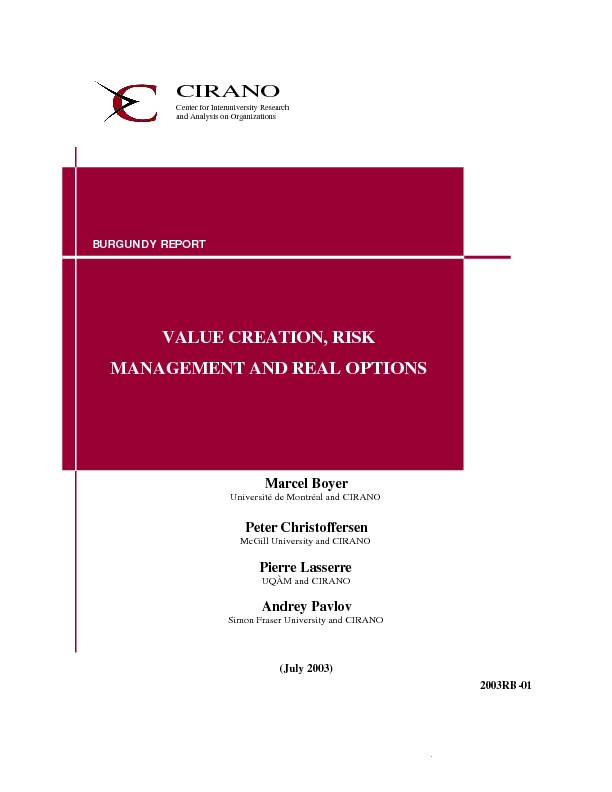Value creation, risk management, and real options
The real options approach considers strategic management and decision-making as a process aimed at actively reducing exposition to downside risk and promoting exposition to upside opportunities. It stands at the hinge between pure finance and other areas of decision making under risk such as project evaluation, market entry and exit, organizational restructuring and re-engineering, technology adoption, climate change and biodiversity decisions, etc. The approach underlines a frame of mind and uses methodologies that appeal to a wide array of managers, thus providing a common language. Real options have applications in many areas that are central to modern corporations: market coverage and development, finance, human resources management, technology management, R&D and knowledge management, etc. Thinking in terms of real options represents a major development in strategic but remains relatively unknown in spite of its adoption by firms such as Airbus, GE, Hewlett Packard, Intel, Toshiba and others. Nonetheless, as shown in the academic literature and as argued in some of the quotes below, the contribution of higher level managers to the value of a firm lies in the creation and the exercise of real options. Indeed the value of strategic management itself can be assessed that way. At a more macroeconomic level, the efficiency of financial systems rests primarily on proper risk assessment and management in project evaluation. The real options approach is the crucial analytical tool to fulfill such a need and act as a link between the financial and the real sectors.
[ - ]




